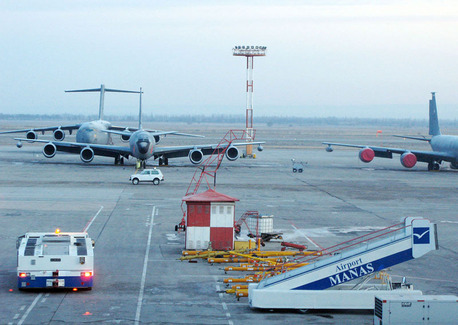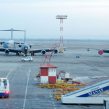
Russia Plans to Open Military Training Facility in Kyrgyzstan
Publication: Eurasia Daily Monitor Volume: 7 Issue: 166
By:

On September 13, Russian Defense Minister, Anatoliy Serdyukov, and his Kyrgyz counterpart, Abibilla Kudayberdiyev, discussed the possibility of opening a Russian military training center in the southern city of Osh. The proposal comes almost one year after Washington and Bishkek began discussing the possibility of opening a US training facility in southern Kyrgyzstan (EDM, March 11).
Earlier this year, the former Commander of US Central Command (CENTCOM), General David Petraeus, and former President, Kurmanbek Bakiyev, agreed to proceed with building the training facility to train local military personnel with the help of US funds. Moscow, in turn, unsuccessfully tried to launch a second military base within the Collective Security Treaty Organization (CSTO) in 2006 and in 2009, in addition to the Kant airbase stationed in Kyrgyzstan since 2003. However, negotiations between Moscow and Bishkek over a second base failed to reach any concrete results, with Bakiyev reportedly putting forward “unacceptable conditions” for his Russian counterparts (www.kommersant.kg, September 10).
In 2009, Bakiyev maneuvered between Washington and Moscow, using “base politics” to secure the highest possible returns from both partners. In February 2009, Bakiyev promised to expel the US military from Kyrgyz territory after receiving a $2 billion loan from Russia, but he changed his mind four months later. His about-face embarrassed the Russian government.
The promise to open a second Russian base in Osh, therefore, seemed more as a rebound to this disappointment in 2009. Deputy Prime Minister, Igor Sechin, and Serdyukov visited Bishkek in July 2009 to iron out details with Bakiyev. However, the second Russian base never reached any firm conclusion, further antagonizing the Kremlin. In return, a few months into unsuccessful negotiations with the Russian side, Bakiyev was attacked by the Russian media. His regime was toppled in the midst of Moscow’s black propaganda.
“We did not stop and are continuing to work with Kyrgyzstan’s defense ministry. I have invited to Moscow this country’s new defense minister, Major-General Abibilla Kudaiberdiev, who will arrive in the near future,” Serdyukov said before meeting his Kyrgyz counterpart (RIA Novosti, September 10).
Details of the Serdyukov-Kudaiberdiev meeting remain undisclosed. Some reports assert that Kyrgyzstan will receive armaments in exchange for hosting another Russian military facility (www.kommersant.ru, September 14). According to the Russian media, Kyrgyz President, Roza Otunbayeva, earlier expressed support for foreign military facilities. Beyond this limited information, neither the Russian nor Kyrgyz sides have made any statements concerning the prospective training center.
By contrast, details about the future of Osh Polygon have been widely publicized. Reportedly, the US will spend $10 million to help Kyrgyz troops counter terrorism. Negotiations on the construction of the center began in August 2008. One year later, the Kyrgyz and US sides reached an agreement on most issues. Washington renewed these negotiations with Otunbayeva’s government after Bakiyev was ousted. Likewise, despite the ongoing controversy surrounding the Transit Center “Manas,” the US and Kyrgyzstan have renewed the rental contract for an additional year within the framework of the existing five-year contract reached last year (www.akipess.kg, September 10).
Moscow’s proposal to open a training facility comes after the CSTO refused to act on Kyrgyzstan’s plea to deploy troops to stop the bloodshed in Osh and Jalalabad in June. Distrusting the capability of Kyrgyz military and police forces, Otunbayeva made a desperate appeal to Moscow hours after the violence began. The CSTO missed the opportunity to use its Kant base to react to the crisis.
Kyrgyz-Russian negotiations on the new military training center are taking place while both Washington and Moscow are trying to convince each other that dealing with the aftermath of the conflict in Kyrgyzstan proved the most successful example of bilateral cooperation. “The crisis has brought Russia and the United States together in a region where so many people often suggest that we are rivals. President Medvedev and President Obama have even issued a joint statement on Kyrgyzstan at their last meeting, so we think that is a good and promising basis to build upon,” according to US Assistant Secretary of State, Robert Blake (Carnegie Center discussion, July 30).
If both Moscow and Washington successfully station their respective training facilities in Kyrgyzstan, their military footprints will once again lie in close proximity: the CSTO’s Kant airbase and US Transit Center “Manas” are approximately 40 kilometers apart. The question remains if such US-Russian proximity will become a symbol of grand cooperation rather than competition, as it has often been presented by experts.




